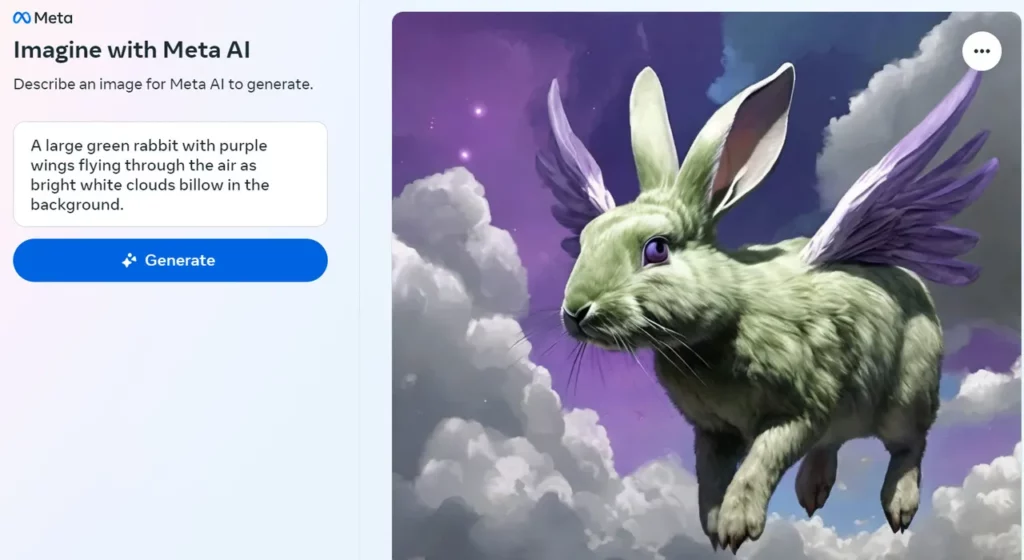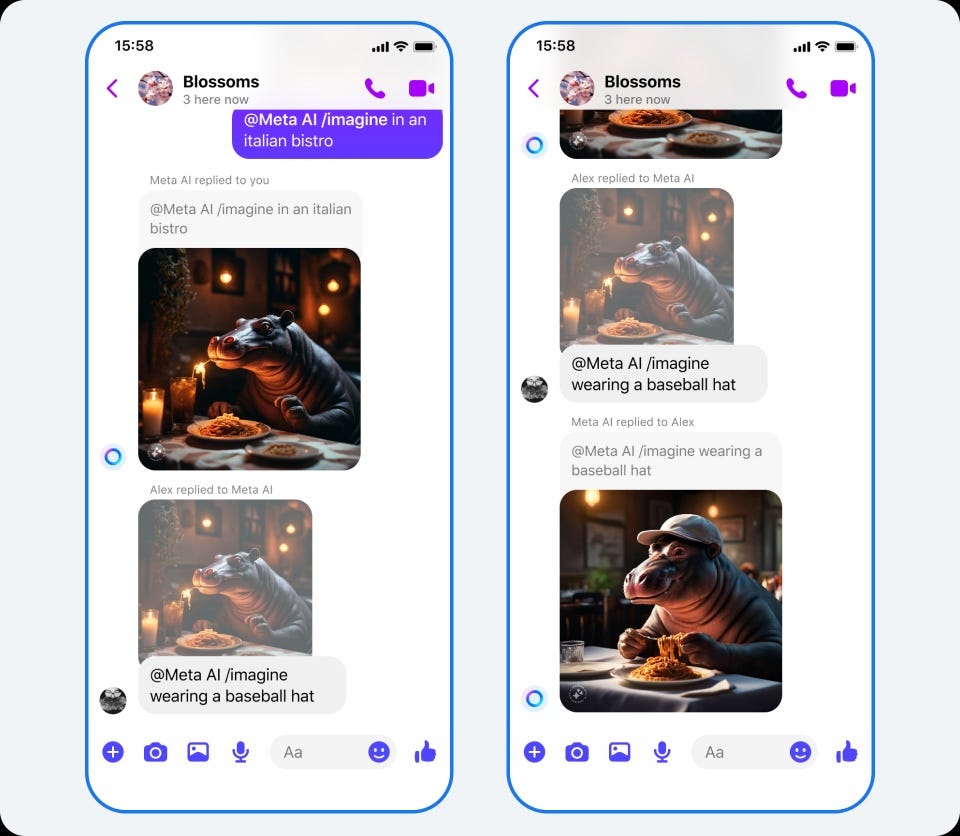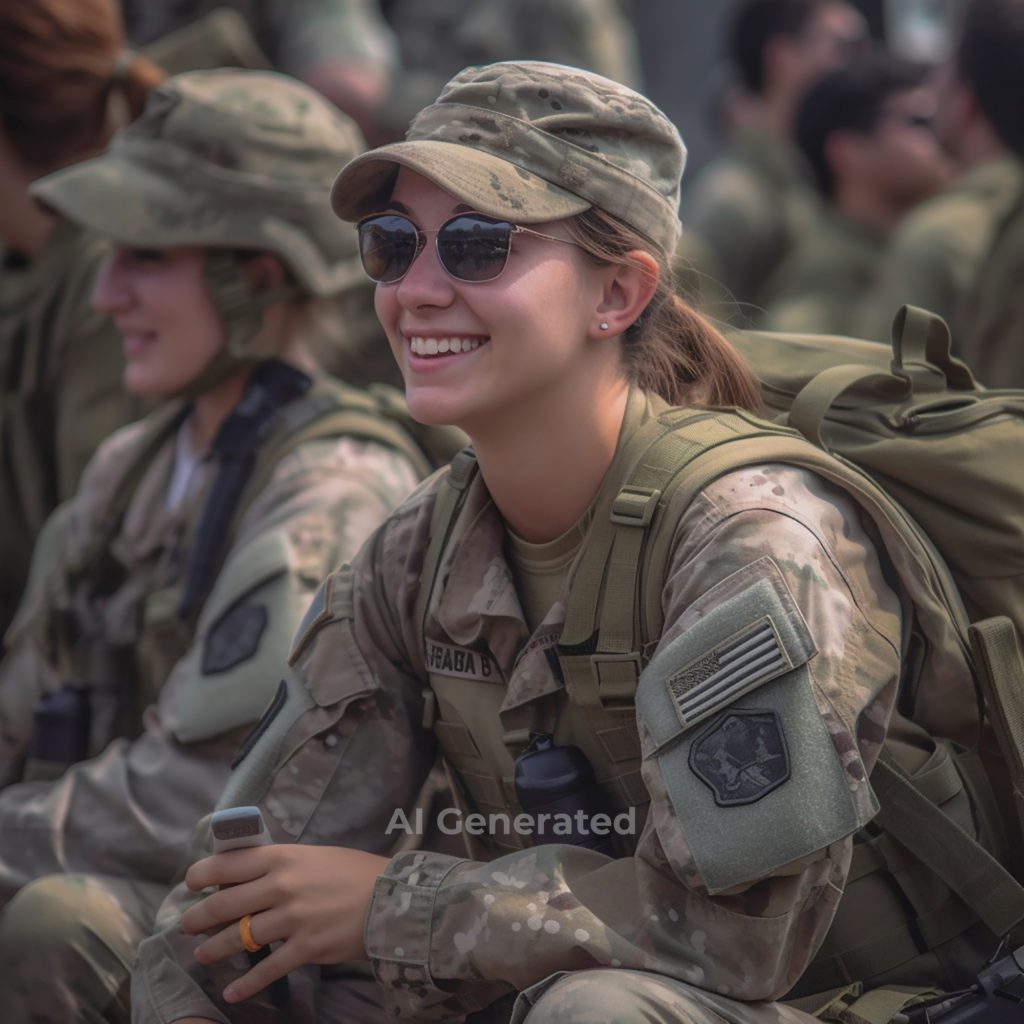In a move that is set to revolutionize the world of AI image generation, Meta unveiled its latest creation — Imagine with Meta AI on December 6, 2023. This new, standalone generative AI experience on the web, allows users to create images by describing them in natural language. The text-to-image AI generator has been trained on a staggering 1.1 billion publicly accessible photos from Facebook and Instagram.
By leveraging this extensive training dataset, Meta aims to offer users a powerful tool to generate high-quality images based on simple text prompts. Similar to OpenAI’s DALL-E, Midjourney, and Stable Diffusion, Imagine with Meta, is powered by Meta’s existing Emu image generation model. It’s currently free to use for users in the U.S. and generates four images per prompt. The new tool can be accessed at imagine.meta.com.

This standalone experience for creative hobbyists lets you create images with the help of AI. “We’ve enjoyed hearing from people about how they’re using Imagine, Meta AI’s text-to-image generation feature, to make fun and creative content in chats. Today, we’re expanding access to imagine outside of chats,” Meta writes in a blog post. “While our messaging experience is designed for more playful, back-and-forth interactions, you can now create free images on the web, too.”
Also Read: Google Gemini: The Next Big Thing?
While Meta had previously dabbled in the text-to-image AI generator game with its offerings within Facebook and Instagram Messengers, Imagine marks the company’s foray into a standalone service outside its messaging platforms. By making this resource available to the public, Meta aims to empower users to quickly and effortlessly create images with the help of AI technology.
The Training
The sheer volume of training data ‘Imagine with Meta’ has been exposed to, is unfathomable. A vast collection of user-generated content has provided the AI with a rich understanding of visual concepts, enabling it to generate images that align with text prompts. However, Meta has explicitly stated that private photos and messages are excluded from the training dataset. So, if you have kept your photos private on these platforms, rest assured that they have not been used to train the AI.
How To “Imagine”
‘Imagine with Meta AI’ offers users a user-friendly interface and an intuitive workflow.
- To generate images, you need to log in with your Meta, Facebook, or Instagram accounts.
- Upon accessing the website, you will be greeted with a prompt field where you enter text to guide the AI in creating the desired image.
- The AI then generates four high-resolution images, each with a dimension of 1280×1280 pixels, which can be downloaded as JPEG files.
It’s worth noting that each image carries a small watermark in the bottom left corner, stating “Imagined with AI.”

The Image Quality
‘Imagine with Meta’ produces impressive results, but it falls short when compared to other AI image generators like Midjourney and DALL-E 3. The AI excels in creating lifelike images but struggles with text rendering and various media outputs, such as watercolours or pen-and-ink. However, it does showcase a remarkable ability to represent diversity in people. Overall, ‘Imagine with Meta AI’ holds its own in the realm of AI image synthesis, offering users a valuable tool for generating captivating visuals.
Watermarks
Creating images via AI leaves a visible watermark in the lower left corner, indicating they were created with Meta AI. It also reduces the chances of people mistaking them for human-generated content. Meta said it will add invisible watermarking to the Imagine with Meta AI experience for “increased transparency and traceability” in the coming weeks. The invisible watermark will be generated with an AI model and detectable with a corresponding model.
“While it’s imperceptible to the human eye, the invisible watermark can be detected with a corresponding model. It’s resilient to common image manipulations like cropping, color change (brightness, contrast, etc.), screen shots and more. We aim to bring invisible watermarking to many of our products with AI-generated images in the future,” Meta said in its blog.

The Need For Watermarks
Watermarking techniques for generative art aren’t new. French startup Imatag, a firm called Steg.AI, Microsoft, and Google have adopted AI-based watermarking standards and technologies, while Shutterstock and Midjourney have agreed to guidelines to embed markers indicating their content was created by a generative AI tool.
The pressure is ramping up on tech firms to make it clearer that the artworks were generated by AI. Recently, China’s Cyberspace Administration issued regulations requiring that generative AI vendors mark generated content — including text and image generators — without affecting user usage.
User Reactions
Artists have made use of this newly launched tool to create some really interesting art of their own. One such artist shared his creation on X (formerly Twitter). It is an image of a purple penguin with one eye missing.
What happened lil guy? #meta #imaginewithmeta #bestfastesttexttoimage pic.twitter.com/uIARuIfRz0
— PenguinDreams Cannabis (@PenguinDreams22) December 8, 2023
Arun has summed up what ‘Imagine with Meta AI’ is all about in his post on X.
Imagine with Meta: Where AI Creativity Comes Alive
— Arun (@inspirearun) December 8, 2023
Unleash imagination: Meta unveils AI image creator Imagine. Just describe a visual idea and this innovative tool conjures it into being.@Meta @Meta #imaginewithmeta #aimeta #generativeai #aipoweredcreativity pic.twitter.com/ptQjERJ4zW
The AI Multiverse – This user created a short animated video clip using a series of AI tools. Really goes to show how far technology has come.
get #chatgpt to come up with a story, go to #discord and use #moonvalley to get some animations from images you had made on #imaginewithmeta or #playgroundai or #dalle3 … pic.twitter.com/dv81Zi5pdx
— lalo adrian morales (@lalopenguin) December 10, 2023
What do you think of “Imagine with Meta AI?” Use it and let us know your views in the comments below!


